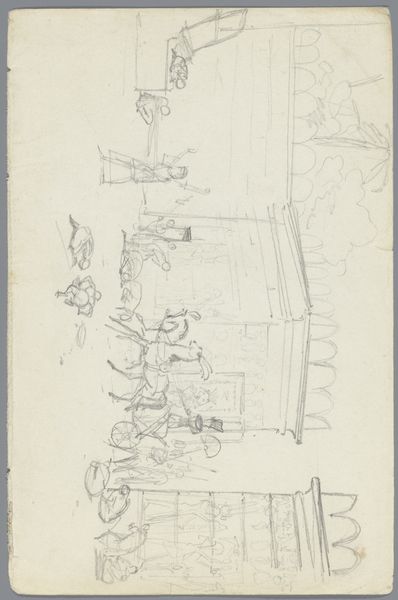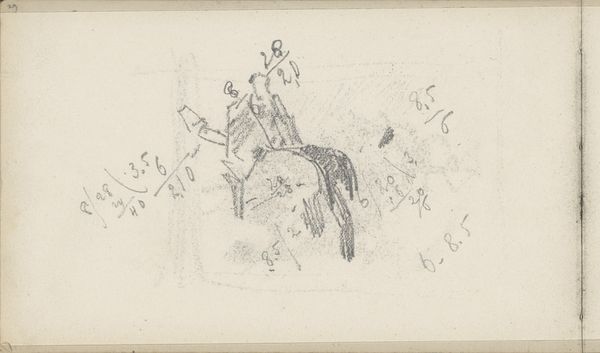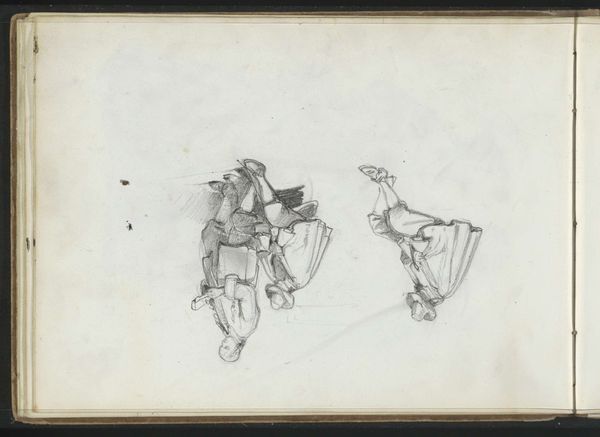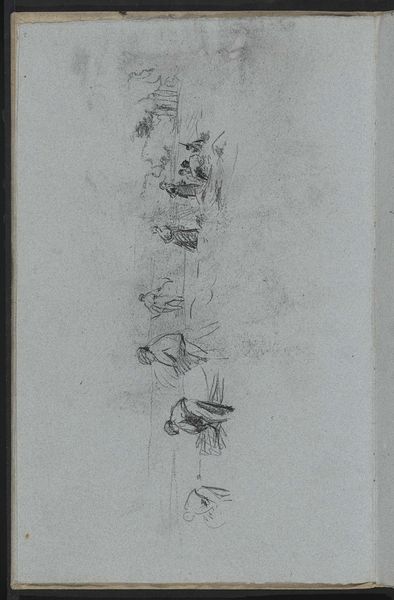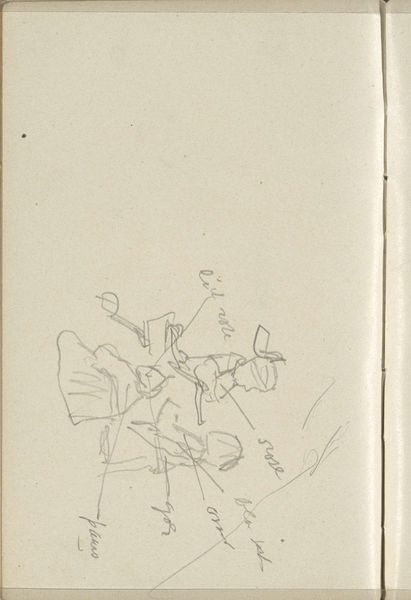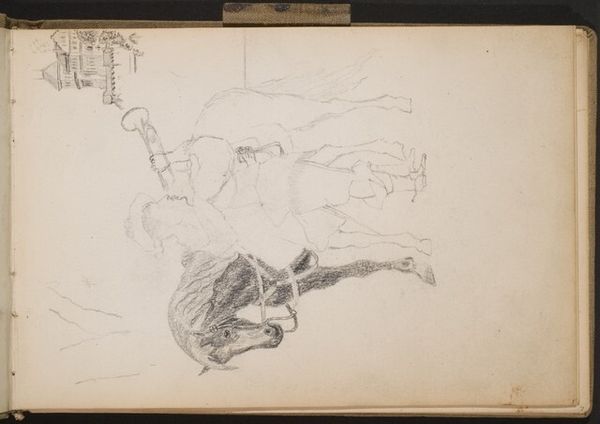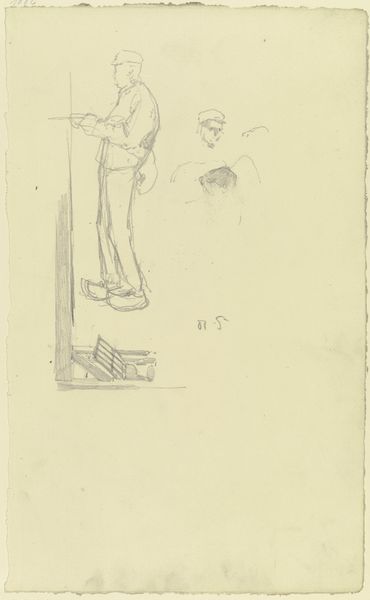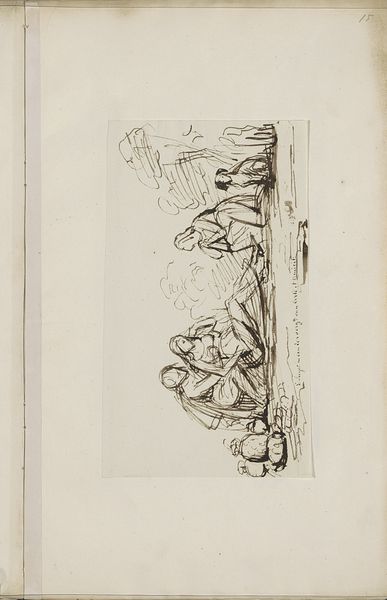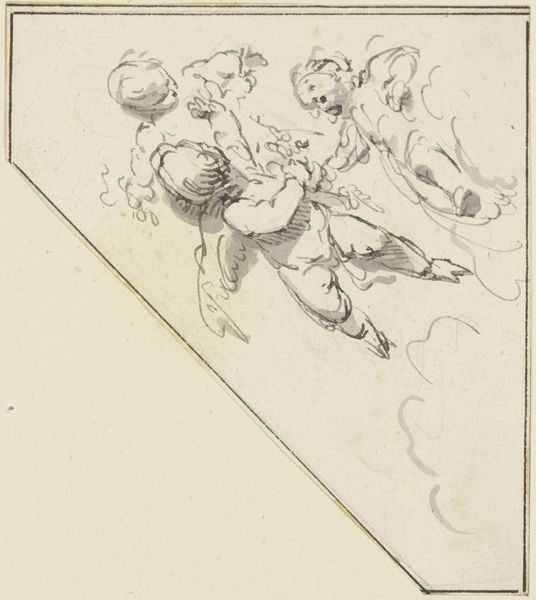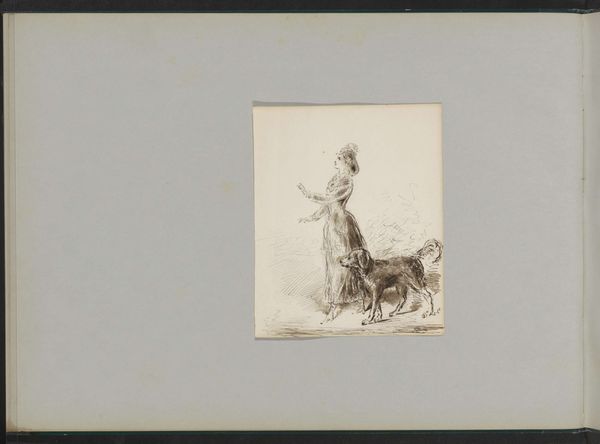
drawing, graphite, pen
#
portrait
#
drawing
#
neoclacissism
#
allegory
#
pen sketch
#
figuration
#
pen-ink sketch
#
graphite
#
pen
#
academic-art
Dimensions: height 363 mm, width 252 mm
Copyright: Rijks Museum: Open Domain
Curator: Before us, we have a drawing by Karl Joseph Aloys Agricola from 1812, titled "Vrouw, mogelijk de Liefdadigheid, ondersteunt een oude man," or "Woman, possibly Charity, supporting an old man". Editor: The subdued graphite and pen work create a poignant scene. The delicate strokes emphasize fragility, the man leaning heavily on his staff, the woman composed. It’s very subtle and subdued—I’m struck by that delicacy. Curator: Agricola worked during a period where Neoclassicism heavily influenced artistic expression. He creates here an allegorical piece, tapping into the theme of charity, a very public concern within the rising social and political contexts of Europe at this time. What I see here is not only fine draftsmanship, but a deliberate invocation of classical virtue presented to a contemporary audience. Editor: Indeed. Thinking about materiality, what sort of paper was available? How did Agricola’s social status as an artist influence the materials at his disposal and how his work was received by a burgeoning art market and Academy? His method utilizes delicate strokes. This, combined with the grayscale drawing, certainly underscores a more traditional method in both his use of figuration and tools available for artists during the period. Curator: Absolutely. Consider also how academies, like those Agricola engaged with, prescribed approaches and styles, reinforcing classical ideals within the social and cultural fabric. This wasn’t just an artistic choice; it reflected a whole system of patronage and artistic training, very much dictating acceptable narratives for public consumption. Editor: True. And it brings us back to labor too, the training Agricola invested into honing a particular aesthetic and the value of artisanal practice at the time—it's a quiet, contemplative piece reflecting that social context. Curator: In viewing this drawing today, its legacy is still significant in how artistic skill was perceived within institutional art settings during that time. The visual representation of public values, disseminated by rising Academies, reminds us about how the politics of imagery function. Editor: Absolutely. And understanding this artistic labour reminds us to always look beyond what initially meets our eye.
Comments
No comments
Be the first to comment and join the conversation on the ultimate creative platform.


